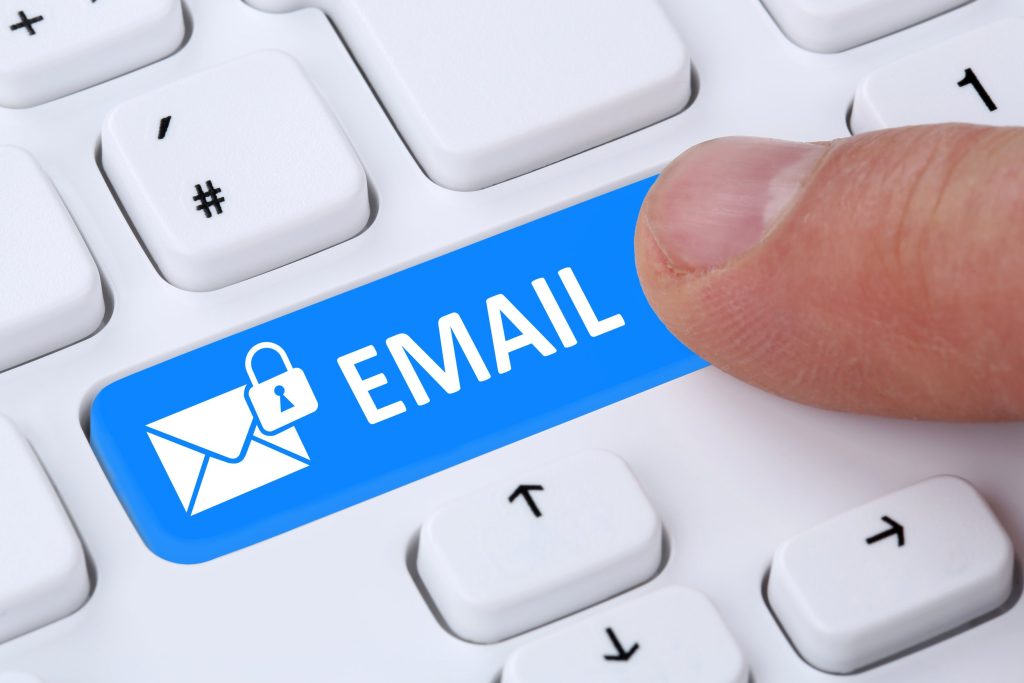
Want to secure your emails in Outlook? Sending emails is a routine part of our workday, but it’s important to remember that emails can be intercepted. Companies that deal with sensitive data or need to meet regulatory requirements can ensure email security by encrypting them, making sure they are only read by the intended recipients. Outlook email encryption ensures that any email you send with Microsoft’s email client is encrypted before it leaves your computer.
The Difference Between Encrypted and Unencrypted Email
Unencrypted emails are sent in plain text, which means anyone who intercepts them can read their contents. This lack of security makes your sensitive information vulnerable to hackers. Encrypted emails, on the other hand, use advanced encryption algorithms to scramble the message content. Only recipients with the correct decryption key can read the email. Even if intercepted, encrypted emails remain unreadable to hackers. Email encryption ensures that only the intended audience (recipients) reads the message content of an email (from the sender). Think of it as using certified mail with snail mail.
Reasons to Send Encrypted Emails
Encrypting your emails ensures your communication stays private and protected. Here are some compelling reasons to send encrypted emails:
Ensure Privacy
Encrypting emails adds a layer of security to protect personal data, financial information, and confidential business documents, making it difficult for hackers to intercept and read your messages. When you encrypt message contents, you essentially scramble the ‘plain text’ of what you type into indecipherable zeros and ones.
Meet Compliance Requirements
For industries with strict privacy regulations, such as healthcare and finance, email encryption helps comply with standards for protecting sensitive data. Businesses that deal with student records, financial data, medical records, credit card information, etc., must abide by certain guidelines to stay compliant and pass security audits.
Authenticate Communication
Encryption, combined with digital signing, ensures the email recipient that the email is genuinely from you. This authentication helps combat spam and spoofing, demonstrating your commitment to data privacy.
Setting Up Email Encryption in Office 365
Office 365 offers three built-in email encryption options:
1. Microsoft Purview Message Encryption
This service allows you to send encrypted emails to recipients inside and outside your organization using any email address. It’s easy for administrators and users as it doesn’t require special client-side software. Ensure that Azure Rights Management (Azure RMS) is activated for message encryption in Office 365. Microsoft 365 Message Encryption utilizes Microsoft’s Rights Management System for the encryption engine and processes.
2. Secure/Multipurpose Internet Mail Extensions (S/MIME)
S/MIME provides certificate-based encryption and digital signing for messages, ensuring sender identity validation and message confidentiality. It requires public keys for recipients and private keys for senders. Follow these steps to enable S/MIME:
| Step | Description |
|---|---|
| Set up S/MIME certificates | Install a Certification Authority (CA) and set up a public key infrastructure. |
| Publish certificates | Publish user certificates in the Active Directory. |
| Sync certificates | Sync user certificates with Office 365. |
| Configure email clients | Distribute certificates to users’ devices and enable S/MIME in email clients. |
3. Information Rights Management (IRM)
IRM encryption applies usage restrictions to emails, such as preventing unauthorized forwarding or copying. It’s ideal for protecting proprietary information within a company. Azure RMS must be activated to use IRM in Office 365.
Sending Encrypted Email in Outlook
Once email encryption is enabled in Office 365, follow these steps to send an encrypted email in Outlook:
- Open Outlook and click “”New Email.””
- In the composition window, go to the “”Options”” tab.
- Select the “”Encrypt”” button and choose your preferred encryption options.
- Compose your email and click “”Send.””
To encrypt all outgoing messages by default:
- Go to “”File”” > “”Options”” > “”Trust Center”” > “”Trust Center Settings.””
- Select “”Email Security”” > “”Encrypted email”” and check “”Encrypt contents and attachments for outgoing messages.””
This ensures your messages and attachments are encrypted, protecting them from unauthorized access. The recipient must also have encryption enabled to decrypt and read the email.
Best Practices for Sending Encrypted Emails
Follow these best practices to maximize email security:
- Use strong and unique passwords for email accounts and encryption keys.
- Regularly update software and encryption tools.
- Verify recipient identities before sending sensitive information.
- Avoid sending sensitive information over unsecured networks.
- Double-check recipients’ email addresses to avoid sending encrypted emails to the wrong people.
- Keep a secure backup of encryption keys.
Alternatives to Email Encryption in Office 365 and Outlook
While email encryption is effective, other secure communication methods are available:
Secure Messaging Apps
Use apps that provide end-to-end encryption for secure messaging. HIPAA-compliant apps like OhMD or Rocket Chat are suitable for industries with specific compliance needs.
Virtual Private Network (VPN)
Encrypt your internet connection with a VPN, creating a secure tunnel that prevents email interception.
Secure File-Sharing Services
Services like Dropbox or Google Drive offer encrypted file sharing with access controls, ensuring secure data sharing.
Safeguard Your Communication
Encrypting emails in Outlook and Office 365 is crucial for maintaining the confidentiality and security of sensitive information. By sending encrypted emails, you protect your data from hackers and unauthorized access while meeting compliance requirements. Enabling encryption in Office 365 enhances the security of your communication and effectively protects sensitive information.

